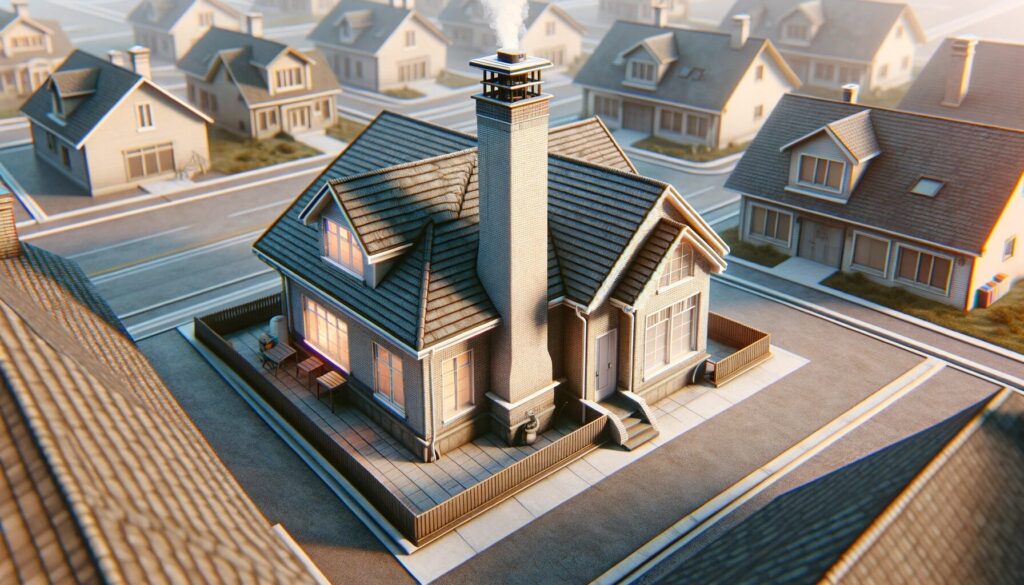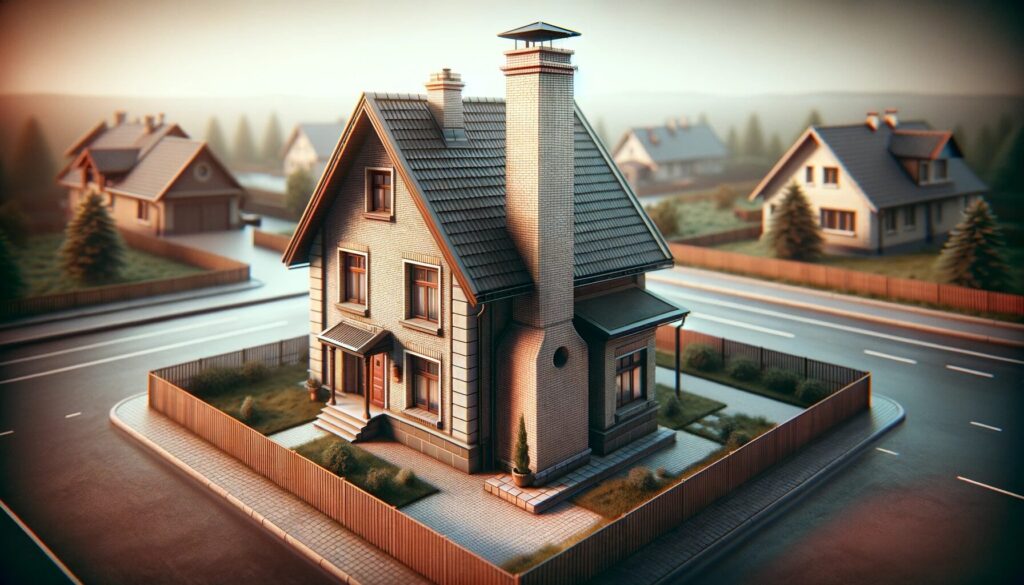When we talk about chimney flues, we’re addressing a fundamental aspect of your home’s functionality and safety. A chimney flue is the highway that transports smoke and gases safely out of your house. It’s a key player in your home heating system, often unnoticed until problems arise. This article is crafted to guide both DIY enthusiasts and professionals through the intricate world of chimney flues, blending practical advice with clear, step-by-step instructions.

Anatomy of a Chimney Flue
Understanding your chimney flue begins with its anatomy. It’s not just a conduit for smoke, it’s a complex system designed to ensure maximum efficiency and safety. Here are its main components:
- Flue Liner: The inner layer of your chimney, crucial for protecting the masonry from heat and corrosion. They come in different materials like metal, clay, or cast-in-place liners.
- Damper: Located just above the fireplace, this adjustable cover controls airflow and, by extension, the intensity of your fire.
- Chimney Cap: The small, protective covering at the top of your flue, preventing debris, animals, and rain from entering.
- Crown and Flashing: These elements prevent water infiltration, which can cause significant damage over time.
There are different types of chimney flues to consider. Masonry flues are common in older homes, crafted from bricks or stones. Metal flue liners, on the other hand, are often used in newer constructions or as replacements, known for their durability and efficiency.
Installation and Types of Flue Liners
Installing a chimney flue liner demands precision and understanding of the different types available:
- Measuring: Accurate measurement of your chimney is critical. This ensures the liner fits perfectly, optimizing safety and efficiency.
- Choosing the Liner: Each liner type has its merits. Clay liners are traditional and ideal for wood-burning applications. Metal liners offer versatility for various heating systems. Cast-in-place liners provide robust reinforcement for older, deteriorating chimneys.
- Installation Process: This involves carefully inserting the liner, securing it, and ensuring a proper connection at the base. It’s vital to use fire-resistant materials for sealing to prevent any potential hazards.
Remember, compliance with local building codes and safety regulations is not just mandatory – it’s crucial for your safety.

Maintenance and Cleaning
Regular maintenance of your chimney flue is non-negotiable. It’s the key to preventing dangerous situations like chimney fires or carbon monoxide leaks. Here’s how to stay on top of it:
- Annual Inspections: Have a professional inspect your chimney annually to catch any issues early.
- Proper Cleaning Tools: Equip yourself with the right tools – brushes, rods, and a vacuum specifically designed for chimney cleaning.
- Routine Cleaning: The frequency of cleaning depends on usage, but regular sweeping is essential to remove soot and creosote buildup, both of which are fire hazards.
Be vigilant for signs of wear or damage, such as cracks or loose bricks. These could indicate the need for repair or even replacement of parts of your chimney system.
Common Problems and Solutions
When it comes to chimney flues, a few common issues can rear their heads. With years of experience under my belt, I’ve seen these problems and their solutions firsthand:
- Blockages: These are often caused by nests, debris, or a buildup of soot and creosote. The key here is prevention and regular maintenance. A chimney sweep once a year, or more often if you’re a frequent user, and a well-fitted chimney cap can work wonders.
- Cracks or Leaks: These are less obvious but can be dangerous. A small crack in your flue liner might not seem like much, but it can allow harmful gases into your home. Regular inspections are crucial. If you find small bits of flue liner in your fireplace or notice a draft, it’s time to call a professional. Sometimes, a simple patch job will do, but other times, you might need to reline or rebuild the flue.
- When to Replace: This decision often comes down to age and condition. If your chimney is showing extensive wear or isn’t performing as it should, particularly after major changes to your heating system, it may be time for a replacement.
Enhancing Efficiency and Safety
Improving the efficiency and safety of your chimney flue isn’t just good practice, it’s a necessity:
- Boosting Efficiency: A well-functioning flue means a more efficient heating system. Consider upgrading to high-efficiency flue liners, ensuring proper insulation, and sizing the flue correctly for your appliance.
- Safety Measures: The primary defense against chimney fires and carbon monoxide leaks is regular cleaning and proper ventilation. Also, installing carbon monoxide detectors near your fireplace is a wise safety measure.
- Advancements in Flue Tech: Today, there are more options than ever for flue materials and designs. Stainless steel liners and heat-resistant flue tiles are just a couple of the advancements that offer better performance and longevity.
FAQ Section
The standard recommendation is an annual cleaning. However, if you use your fireplace heavily, you might need to do it more frequently.
While it’s possible for a skilled DIYer to install a flue liner, it’s generally advisable to hire a professional. This ensures safety and compliance with building codes.
Warning signs include visible damage like cracks, poor performance, unusual sounds or smells, and even pieces of the liner in your fireplace.
Yes, gas appliances often require liners that can handle condensation, while wood-burning appliances need liners that can withstand higher temperatures and creosote build-up.
A damaged flue can lead to heat loss, making your heating system work harder and less efficiently. It’s akin to trying to heat a room with an open window.
